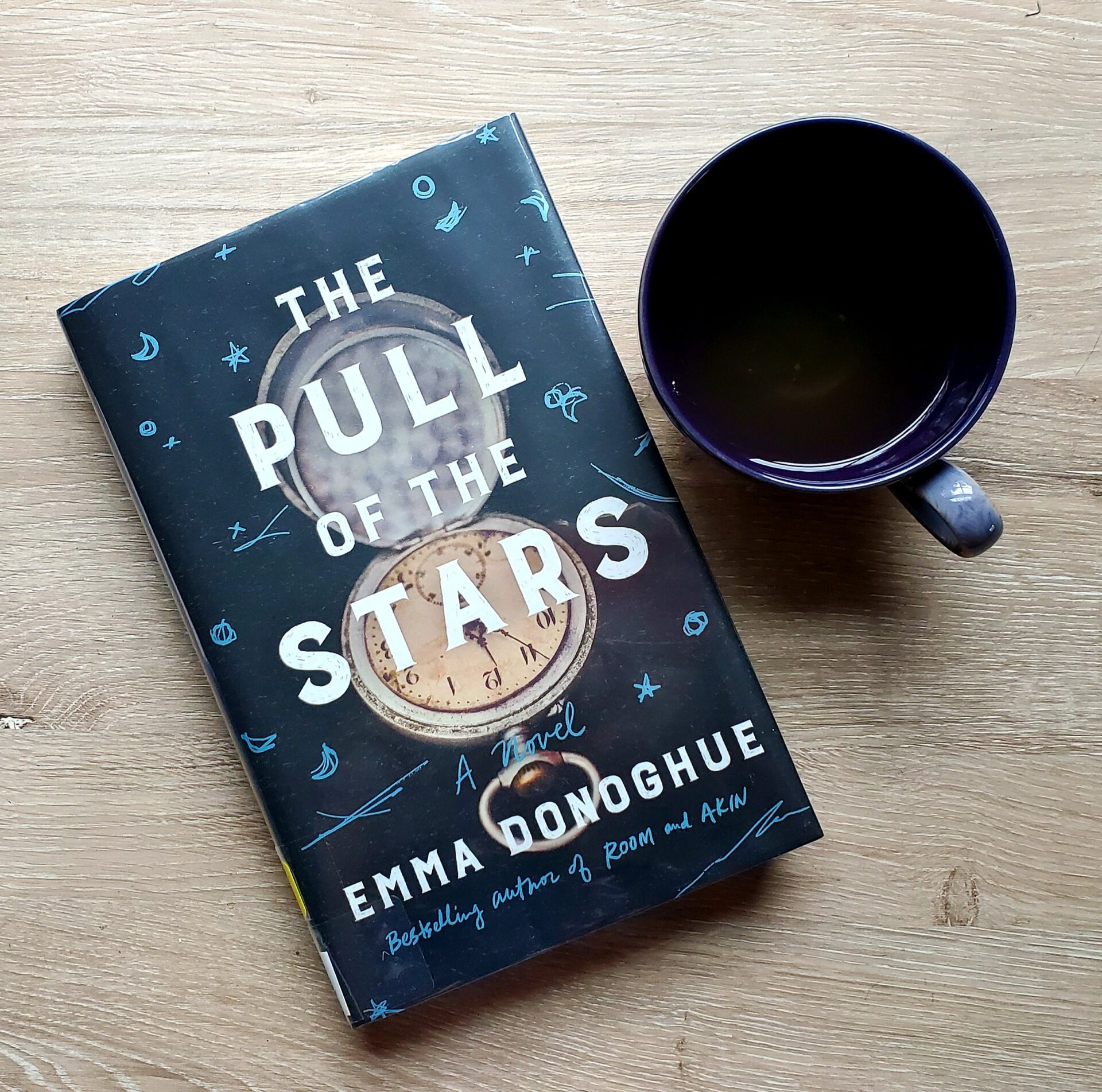I suppose that when Emma Donoghue wrote The Pull of the Stars in 2018, the premise of a story set during the 1918 influenza pandemic was pretty darn unique. Not to mention a great way to celebrate the world being free of a crippling epidemic for 100+ years.
Enter 2020, the year that The Pull of the Stars was published — a.k.a, the year COVID-19 overtook the world.
Ummm, yeah. Scratch that statement about being epidemic-free.
What’s The Pull of the Stars about?
The Pull of the Stars immediately shot to the top of my TBR list since I’m drawn to any story about historical disease. (Hello, books about The Black Death.) I’m also a huge fan of Donoghue’s previous novels Room and The Wonder, so I was eager to get my hands on her new book.
We were smack in the middle of the 2020 COVID quarantine (i.e., pre-boosters, pre-vaccines, still at the please-stay-back-or-I-might-immediately-drop-dead phase) when I started reading The Pull of the Stars.
You’d think that reading art which so eerily imitates life would be off-putting. NOPE. Donoghue’s novel is more fascinating than alarming, at least in terms of all things influenza and pandemic. In fact, the devastating disease takes a backseat to the medical and political strife going on in the book. When the flu does rear its ugly head, though, it makes a lasting impression. If you’ve lost someone to COVID, perhaps don’t read this book.
Life is stranger than fiction…
It should be noted that Donoghue wrote The Pull of the Stars before COVID hit. That means her research for this historical fiction novel was done before Coronavirus was even a blip on our radars. There’s no way that anything in 2020 could have influenced her depiction of the flu-ravaged masses of 1918. Yet, the parallels between the 1918 influenza pandemic and the 2020 COVID pandemic are astounding. A hundred years have passed, but disease is still disease. Fear is still fear. Selfish assholes are still selfish assholes.
But, I digress.
What I didn’t expect from The Pull of the Stars
Let’s talk about what I didn’t expect from a novel about the 1918 epidemic: a story that would make me more terrified of childbirth than anything else I’ve ever read. The Pull of the Stars is visceral on a level that makes me want to clamp my legs together and hug my ovaries.
The story takes place over just three days. It follows Julia, an Irish maternity nurse working her shift along with a volunteer helper. What we see through Julia’s eyes is an exquisite portrayal of the cruel dichotomy of pregnancy and childbirth: how bringing forth life can be both wanted and unwanted, both welcomed and feared in equal measures. Because back in the early 1900s, childbirth was the constant bringer of both life and death, all too often in the same moment.
I’ve always known that giving birth is risky, but I didn’t realize how many things can go oh-so-very wrong as a woman attempts to usher new life into the world. Yes, the book takes place in 1918 and medicine has made amazing strides since then — but the things that can go wrong have not changed. And, some of those things, we’re only mildly better at treating in the modern age.
Let’s just say that if you’re on the fence about having children, The Pull of the Stars will give you an ample boost up and over to the “Fuck, no!” side of things.
Should you read The Pull of the Stars?
I feel like getting you to read The Pull of the Stars after this book review is a gonna be a hard sell. Please keep in mind that, despite all the sadness and medical ickiness and wartime trials… I couldn’t put this book down. I absolutely loved it and devoured it in just a few days.
So, please go read The Pull of the Stars.
What’s the book-inspired recipe for The Pull of the Stars?
Check back in for my book-inspired recipe: Chocolate Orange Truffles.






























































































































































































































